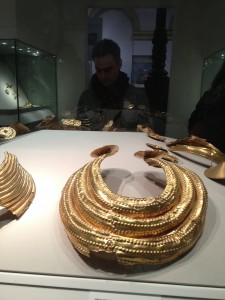I’m reposting these talk-and-conference reviews from 2010, as the issues covered are now to topical. With Louise Shannon recently made Curator of Digital Design at the Victoria and Albert Museum, debate continues around what museums might collect from the field of digital art and design, and how it should be conserved (MoMA’s Architecture and Design Department set the pace with its Video Games acquisitions, which I spent a fun afternoon playing on my last visit). Louise co-curated the seminal show, Decode: Digital Design Sensations, staged in the Porter Gallery, and hearing one of the co-curators of the latest show to open there, “Sky Arts Ignition: Memory Palace”, on BBC Radio 4’s “Start the Week” (17/6/13), made me think about how we might be “reneging on remembering” by relying on digital storage to save our real-life memories. But what happens when digital formats deteriorate and/or become obsolete, and those files are on longer accessible? Check back for my review of Memory Palace, coming soon…
John Maeda in conversation with Alice Rawsthorn
Attended 2 February 2010
Decoding the Digital Conference
Victoria and Albert Museum, London
Attended 4-5 February 2010
Monday 7:01pm, 22 February 2010
“Discussing the digital”
by Liz Farrelly
Originally published on Eye Blog
John Maeda on dirt, de-cluttering and the power of art
Even though John Maeda wasn’t speaking at the conference, “Decoding the Digital”, staged alongside the exhibition Decode: Digital Design Sensations, his work and words (from this lecture earlier in the week) were referenced during the proceedings.
Continue reading









